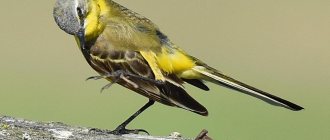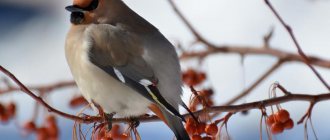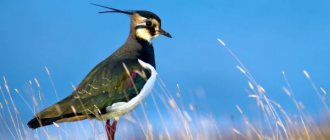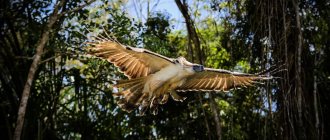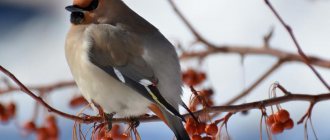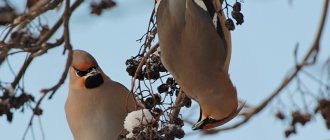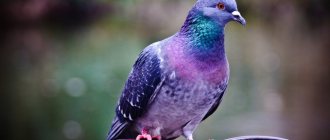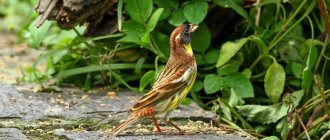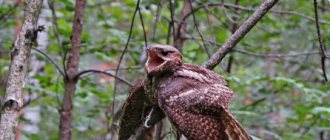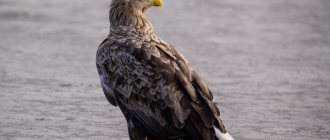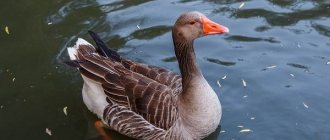The modest-sized yellow-headed wagtail (in Latin Motacilla citreola) is classified as a member of the family Wagtail, genus Wagtail, and species Yellow-headed Wagtail.
This species of bird was first described in 1776 by a naturalist from Berlin, Peter Simon Pallas, who was also a famous scientist and traveler and served in Russia.
The name of the family of these birds was given by a feature that distinguishes them from other small birds: while on the ground, wagtails do not jump, but run quickly, twitching or shaking their tail. And since the tail is the back or tail part of the bird’s body, everything becomes clear.
Male outfit in autumn and winter
Subspecies
Subspecies of the yellow-headed wagtail include:
- Motacilla citreola calcarata (1836) – Black-backed yellow-headed wagtail. This subspecies was first described by the British scientist Brian Houghton Hodgson.
- Motacilla citreola quassatrix (1960). This subspecies was discovered by the Soviet ornithologist Portenko L.A.
- Motacilla citreola werae (1907) – Lesser yellow-headed wagtail. For the first time, information about this bird was systematized and made public by the Russian traveler and ornithologist S. A. Buturlin. Initially, it was believed that these birds belonged to the species that we are considering. Then the bird moved to the rank of a subspecies. Well, today there are a number of ornithologists who believe that this subspecies should be classified as an independent species of birds.
In general, the genus of wagtails includes 13 independent species of these birds.
Nest construction
These birds arrive at their nesting sites in February-May, after the snow has melted and green grass has appeared (depending on the latitude). In the central zone of our country, yellow wagtails usually appear in the second half of April, and in the Siberian region - in the first half of May. Birds make nests in wetlands with rich shrub and grass cover - in a small depression on the ground, in thick grass, under a bush or near a hummock.
Before starting construction, the female carefully selects a place for the nest within one or two days, inspecting every patch of vegetation in the area. The nest itself is a flat cup with a depth of 30 to 45 millimeters and a diameter of 80-110 millimeters. Various parts of meadow vegetation are used as building materials. The bottom of the nest is covered with bunches of horse hair or wool. Often you can find several green leaves of cereal plants or feathers there.
Description
Let's look at the dimensions of the yellow-headed wagtail:
- The length of the bird can be from 15 to 20 cm. And this takes into account the data of both sexes. But on average, for males it is 18.5 cm, and for females it is 16.5 cm.
- Body weight can range from 16 to 24 g. Males weigh on average 20.8 g, and females weigh 19.8 g.
- The length of the wing of a male wagtail can vary from 8.2 to 9.3 cm, on average - 8.7 cm. And in the opposite sex, the wing length ranges from 7.7 to 8.2 cm, but on average - 7.9 cm.
- The wingspan of males ranges from 25 to 29.6 cm, with an average of 27.6 cm. In females, this figure can range from 24.2 to 24.7 cm, with an average of 24.4 cm.
- The tail can be called long in relation to the body. But for representatives of the wagtail genus this is not surprising. But at the same time, the length of the tail is no greater than the length of the body. Males boast a tail of 7.5 to 8.5 cm, while females boast a tail of 7.3 to 7.7 mm.
If we talk about the plumage, then in an adult male yellow-headed wagtail in the summer, the plumage of the head and lower part of the carcass has a yellow, almost lemon color, but on the sides of the body it has a gray tint. A very dark spot is visible on both sides of the goiter. The back of the male yellow-headed wagtail is gray with a leaden tint or pale black with a slightly visible olive tint. But the neck is almost black, which creates the feeling of a black collar, which well emphasizes the bright color of the male’s head.
Along the wings two white stripes are visible, formed by the white edges of some rows of feathers on the wings. The side feathers on the tail are also light, almost white. The main color of the wings and tail is brown, often with a black tint.
Females have a more faded color, as is often the case in the world of birds. The plumage of the female's back is also dark, but without black tones, but is based on a gray color, with a barely noticeable bluish tint. The same color most often extends to the area of the back of the head, crown and even the frontal part of the head. The overlay of this dark shade on top of the lemon color makes the female's head plumage gray-green with more pronounced dark flecks. True, a bright yellow stripe runs through the base of the beak, horizontally through the eyebrow area. The side areas of the head, neck and breast have the same color. The female's abdomen is painted light yellow.
Females have two light stripes on their wings that are much thinner compared to the same stripes on males.
In both sexes the plumage on the back of the tail and wings is light. The beak of both the female and the male is black, the legs are brown, almost black. The iris of the eyes is brown or almost black.
In the fall, after molting, the male and female become difficult to distinguish from each other based on their plumage. The male is close in color to the female's outfit in the summer. Only the color of the plumage becomes duller.
Wagtail looking for food
The yellow-headed wagtail is larger in size than the lesser yellow-headed wagtail, as follows from the name of the subspecies. Compared to the subspecies, our wagtail has a gray tint on the sides of the abdomen that occupies a larger area, and the back has a more saturated dark color. Well, on the occipital and parietal areas of the head of the yellow-headed wagtail, one can much more often observe the presence of dark inclusions.
If we talk about comparison with the yellow representative of the wagtails, then in terms of body structure they are very similar. Only the yellow-headed wagtail has a longer beak and tail. True, young representatives of these species, looking at them from a short distance, cannot be distinguished from each other.
Characteristics
During their movement, you can notice that these are very graceful and pretty birds. They walk on the ground quickly and carefully, shaking their heads with each step. At the same time, they try to keep their rather long tail as far as possible from the ground, which is why it is either in a horizontal position or slightly raised above the ground, due to which the birds fully justify their name.
Their flight resembles an arc, that is, they either fall or rise. This occurs as a result of the rapid movement of the wings, which they often bring together. Their voice is not particularly euphonious, and is a simple, pleasant singing.
The back of the bird is gray, the upper part of the head is painted black, the forehead, cheeks and belly are white, the throat and chest are covered with a black spot. The wings are brown-red, the tail is dark, the outer feathers responsible for flight control are pure white, which especially makes the bird flying in the sky stand out. In order to provide the chick with optimal living conditions and the most suitable diet, you need to know what a wagtail chick looks like. This is important so as not to confuse it with another bird. Juveniles are greyish, darker above and lighter below. The beak, iris and legs are black.
Lifestyle and habitat
The yellow-headed wagtail tries to stay in small groups or, in extreme cases, in pairs. They spend a lot of time on the surface of the ground or finding a place for themselves on the stems of plants and branches of bushes.
The food supply consists of various insects, mainly living in water and their larvae.
We can say that this species of the wagtail family chooses the same nesting sites as the yellow wagtail. Often they become neighbors.
He considers tundra territories overgrown with low shrubs or, for example, grassy wetlands in the north of taiga lands with thickets of sedge, reeds or rare young trees to be comfortable. Moreover, the yellow-headed wagtail can nest both in high mountain areas and on the plains. It can also be found in damp meadows and in swampy river valleys. Occasionally, it also chooses dry meadows for nesting, but only if there is a body of water nearby.
Yellow-headed wagtail in flight
Spreading
In most of its breeding range, the yellow wagtail is a migratory bird. Its breeding range includes most of continental Europe, the south of Western and Central Siberia, the north and east of Kazakhstan, the north of Western China, as well as the western regions of Mongolia. In northern Europe, the range covers the entire Scandinavian Peninsula and the White Sea coast. To the east, the northern border of the range runs approximately along the Arctic Circle to the western macroslope of the Urals, where it apparently turns sharply to the south. In southern Europe, the range covers the Iberian Peninsula, the Apennine Peninsula, Sardinia and Sicily. Between the Adriatic and Black Seas to the south, it is distributed approximately to northern Albania and the northern border of Greece. Further, the border runs along the coasts of the Black and Azov Seas (excluding Crimea) and along the 46th parallel reaches the Caspian Sea. In North Africa it breeds in Morocco, northern Algeria and Tunisia. An isolated population lives in the Nile Valley in Egypt. Winters in most of Africa, the coasts of the Arabian Peninsula and India.
Reproduction of yellow-headed wagtail
This bird species usually nests in separate pairs or modest groups. Initially, the territories where new nests will be established are visited by males. Somewhere from April 15 until the beginning of May, adult and colorful individuals begin to arrive. Males choose areas where they will nest and defend them very zealously until the females arrive. Female birds and young males appear in these places 4-10 days after adult males.
As most often happens in the world of birds, the main responsibilities for finding a soul mate and attracting her attention fall on the male. The male's mating arsenal includes sound effects. He, sitting on the top of a large reed, small tree or bush, produces modest chirping or short exclamations. But he manifests himself most clearly in special flights and poses, which he demonstrates in front of the female. For example, it periodically changes its location, flying to another top of the plant, approximately 30-40 meters from the previous one. But the point is how he carries out these flights. Its flight combines elements of gliding, flowing into rapid flapping of its wings, during which the male wagtail arches in such a strange way, as if he wants everyone to notice his bright abdominal color. True, it must be said that the male demonstrates himself more energetically and impressively in front of the female he likes, on a hard surface, both during the construction of the nest and at the time of the formation of the clutch.
During the mating season, the female yellow-headed wagtail displays calmness bordering on indifference. Some would say it's more like infantilism.
Yellow-headed wagtail nests can be found in a variety of places: on very damp ground, hidden in green young grass or bushes; under a hummock or in thickets of dry grass or bushes; in holes in the ground dug by rodents; under rock formations; in old, abandoned deposits of boxes or boards, etc.
The wagtail assembles its nest from dried blades of grass and stems of various plants, mixed with moss and leaves of sedge and cereal plants. The bottom of the nest is abundantly covered with found horse or deer hairs, feathers and moss. The depth of the nest cup is from 3 to 4 cm, and its diameter is from 5.6 to 8.1 cm.
Wagtails move quickly and nimbly on the ground
After the 15th of May, some wagtail nests are already full of eggs. A female yellow-headed wagtail can lay 3 to 7 eggs, but in most cases 4 to 6 eggs can be seen in their nests. Both in size and in the color of the shell, their eggs resemble the clutch of a yellow wagtail. The shell is yellowish, but most often with gray, brown or bluish tints. There are also dark brown spots with rather fuzzy edges. And there are eggs, on the blunt parts of which one can observe thin dark wavy stripes. The egg can reach 1.7–1.9 cm in length and 1.4–1.5 cm in diameter.
The female will begin incubating the clutch as soon as all the eggs are in the nest. The male yellow-headed wagtail does not help his partner to hatch the offspring. He acts as a protector and quite rarely brings food to the female. If she is hungry, she leaves the nest for a short time, hastily catches a few insects and returns. If a threat arises to the offspring, the male begins to fly and make a lot of noise, thereby attracting the attention of all neighbors and relatives to the danger that has arisen. And together they often drive away the predator.
The female sits on the clutch for 13 to 15 days. Both the female and the male feed them, although the female spends almost the entire first week with the babies, because they really need her warmth. The fattening process takes 11–12 days. The chicks, which have already begun to emerge from the nest, continue to be fed by their parents for several days. Young animals acquire full flight skills 16–19 days after hatching.
Juvenile yellow-headed wagtail
Birds from the north of European territories fly out for the winter from the last days of August until the 15th of September.
Yellow-headed wagtails breed once a year.
Nutrition
Insects occupy the main place in the diet of birds. Moreover, on especially difficult days, when there are fewer insects, the wagtail can zealously guard its territory and prevent competitors from hunting on it.
If there are no problems with insects, then the bird can show kindness and allow the uninvited guest to hunt together, but it must go or fly first.
White wagtail eggs
Due to a lack of insects, wagtails sometimes have to change their place of residence. Sometimes they may eat seeds or plants instead of insects, which does not happen often. The wagtail returns to its native habitats around March-April. From this period their mating season begins.
Population and numbers
Unfortunately, ornithologists have little information about the different spheres of life of a wagtail of this species during the periods of migration in autumn and spring. Only one thing is clear: the main aspects of the yellow-headed wagtail’s lifestyle practically coincide with the same aspects of the life of the yellow wagtail. There is information that by the end of the twentieth century there were approximately 1000 to 2500 thousand pairs of individuals of this species on Belarusian territory. And everything suggests that their number is growing.
In any case, today the yellow-headed wagtail species has minimal risks of extinction.
What to feed?
Chicks from the first brood leave the nest in June and hide in the grass or on the lower branches of trees until the end of development. Chicks at this age are called fledglings. They sit motionless in the grass, waiting for their parents to bring them food, but at this moment their lives are constantly under threat from various predators.
If you decide to take your foundling home, you need to know the answers to several basic questions that arise after a wagtail chick appears in the house: what to feed and how to care for the baby? First of all, you need to take care of the most suitable nutrition for him. To do this, you can prepare mixtures of cottage cheese, invertebrates and grated carrots, rich in various vitamins, or purchase food for insectivorous birds at a veterinary pharmacy.
You should limit the chick from touching your hands as much as possible. For this purpose, at first, when the chick does not yet realize that it needs to open its beak to eat food, you can even use medical gloves. The food must be brought to the beak using tweezers, if necessary, lightly pressing on its base. The feeding time largely depends on the baby’s age; in any case, it is better to react to his behavior, because if he gets hungry, he will begin to make a peculiar squeak.
The chick should be given water using a pipette containing purified water. It would be useful to periodically dissolve various vitamins in water in order to maximize the strengthening of the bird’s immunity and prevent the development of viral infections.
Preparing the optimal location
Keep in mind that a wagtail chick in captivity is subject to constant stress. That is why it will be better for your pet if you equip him at home with a semblance of a nest to which he has already become accustomed. It is best to make the bedding from wool that has been previously inspected for the presence of parasites, plant fibers and other soft material.
Try to make sure that the wagtail chick is not in a draft, because this is fraught with colds, which the bird’s immature immunity simply cannot cope with.
Despite the fact that the chicks develop quite quickly, it is best to periodically place a heating pad wrapped in a towel or cloth on the chick. When wrapping, try not to use velvet material, because in this case there is a high probability that the chick will get tangled in it with its paws and damage the claw.
